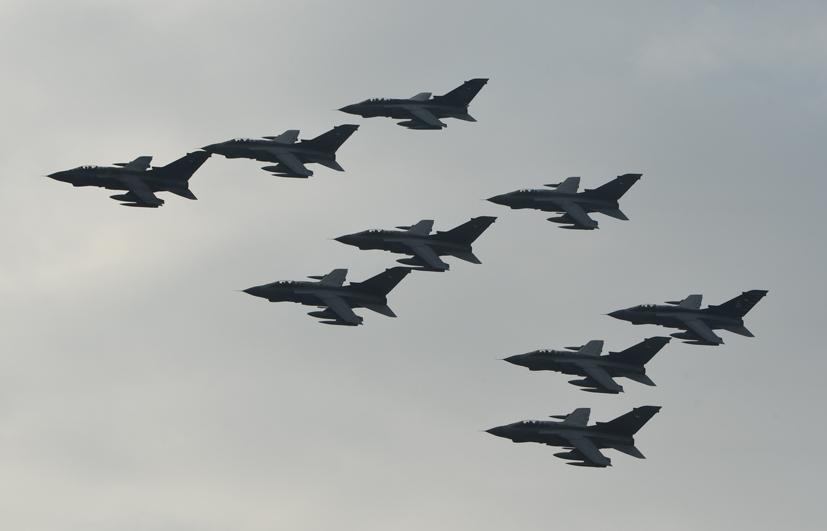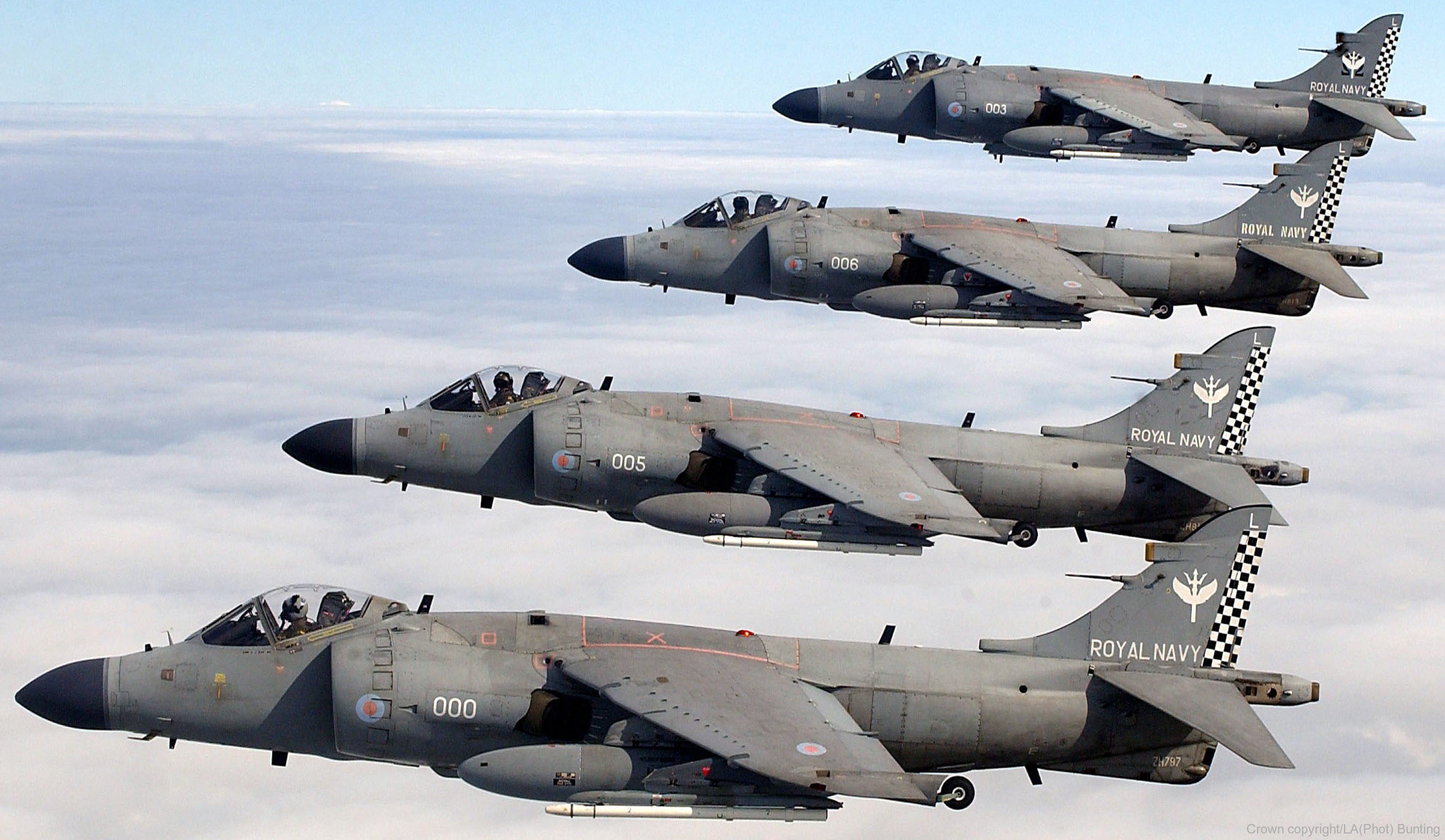- Jan 6, 2018
- 11,640
 OPERATION BANSHEE
OPERATION BANSHEE Operation Directive, January 2000
Security Classification: TOP SECRET
XI. PRELIMINARYX
On conclusion of the recent COBR Meeting, HM Government have set a motion to deploy military assets at strategic locations as a result of recent Turkish aggression that has threatened Cyprus and Israel among other prospective targets. With a primary focus of air policing and deescalation, the pre-positioning of forces would allow swift retaliation if required.
XII. BELLIGERENTSX
Blufor



|
Opfor
|
[/td]
ACTIVE DEPLOYMENT
RAF Akrotiri
[36] Panavia Tornado ADV F3 [No. 25 Squadron RAF, No. 26 Squadron RAF, No. 41 Squadron RAF]
[48] Panavia Tornado GR-4 [No. 24 Squadron RAF, No. 15 Squadron RAF, No. 14 Squadron RAF, No. 3 Squadron RAF]
[4] Lockheed TriStar KC1 [No. 2 Squadron RAF]
[2] Boeing E-3D Sentry, No. 17 Squadron RAF, B Flight
[3] Hawker Siddeley Nimrod MR2, No. 102 Squadron RAF, A Flight
[40] 20th Operational Fire Service
[6] Thornycroft Nubian Major Mk.9 Crash Tender
[600] No. 1 Squadron, RAF Regiment
[10] Rapier FSC
[3] Boeing Chinook HC2 [PEGASUS001, 002, 003]
[400] 21 Engineer Regiment
[15] FV180 Combat Engineer Tractor
[6] JCB HMEE
[120] 1st Royal Artillery
[5] MIM-104F (PAC-3)
[100] 659 Squadron, Army Air Corp
[4] Westland Lynx AH.1
[64] Special Boat Service, X Squadron
[100] Special Strike Company, Royal Marines
[3] Boeing
United Kingdom
[12] Boeing B-52H Stratofortress [RAF No. 91 Squadron]
[4] Lockheed Martin U-2S [RAF No. 120 Squadron A and B Flight]
Mediterranean, Cyprus
[1] HMS Illustrious (Invincible-class Aircraft Carrier)
[650] Royal Navy Personnel
[350] Fleet Air Arm Personnel
[200] 4-2 Commando, B & C Company
[12] British Aerospace Harrier II GR.9A (802 Sqn, [E, F, G] Flight)
[4] Westland Sea King HC.4 (847 Sqn, B Flight)
[2] Westland Sea King ASaC7 (882 Sqn, C Flight, [OVERSEER 5, OVERSEER 6])
[350] Fleet Air Arm Personnel
[200] 4-2 Commando, B & C Company
[12] British Aerospace Harrier II GR.9A (802 Sqn, [E, F, G] Flight)
[4] Westland Sea King HC.4 (847 Sqn, B Flight)
[2] Westland Sea King ASaC7 (882 Sqn, C Flight, [OVERSEER 5, OVERSEER 6])
[1] HMS Edinburgh (Type 42 Destroyer)
[253] Royal Navy Personnel
[1] HMS Gloucester (Type 42 Destroyer)
[253] Royal Navy Personnel
[1] HMS Lancaster (Type 23 Frigate)
[185] Royal Navy Personnel
[2] Pacific 22 RIBs
[2] Pacific 22 RIBs
[1] HMS Monmouth (Type 23 Frigate)
[185] Royal Navy Personnel
[2] Pacific 22 RIBs
[2] Pacific 22 RIBs
[1] HMS Turbulent (Trafalgar-class Submarine)
[130] Royal Navy Personnel
[1] HMS Vengeance (Vanguard-class Submarine)
[135] Royal Navy Personnel
[16] Trident D5
[1] RFA Pacific (Wave-class Tanker)
[80] Royal Fleet Auxiliary Personnel
[1] RFA Blyth (Fort Victoria-class Replenishment Oiler)
[264] Royal Fleet Auxiliary Personnel
XIV. CASUALTIES AND LOSSESX
| Blufor | Opfor | Non-Combatant |
| Dead: 2 Wounded: 0 | Dead: 523 Wounded: 0 | Dead: 0 Wounded: 0 |
XV. OPERATING BASESX
| Designation | Location | Status |
| RAF Akrotiri | RAF Akrotiri | Active |
| RAF Waddington | England, UK | Active |
| RAF Gibraltar | Gibraltar | Active |
| HMS Illustrious | Aircraft Carrier, Mediterranean | Active |
XVI. CAMPAIGN REGISTERX
| Operation | Description | Status |
| Operation Banshee I JAN2000 - AUGUST2000 | Air Policing Mission for RAF Akrotiri | Successful |
| Operation Banshee II FEB2000 - JUNE2000 | Intelligence Gathering on Turkish Military Movements | Successful |
| Operation Screaming Banshee MAR2000 - JUNE2000 | Air Campaign against Turkey | Successful |
| Operation Protective Banshee JUNE2000 - AUGUST2000 | Peackeeping Operations to oversee elections in Turkey | Successful |
[/td]
Last edited:






